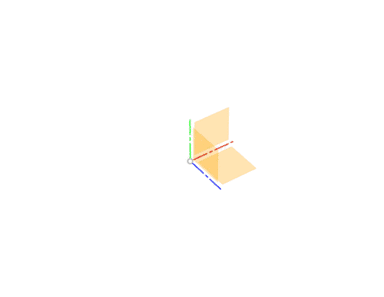Introduction: Fidget Centrifuge
Fidget spinners were a thing. There are now a bazillion lying abandoned, ready for re-purposing into a functional version of their former selves. Have someone who needs distracting, AND a small amount of liquid from which you need a fine suspended solid removed from? Do I have the project for you! Presenting: the fidget centrifuge. Featuring a bearing and a 3D printed enclosure for 10 mini centrifuge tubes, and powered by incessant fidgeting, it will keep an energetic and scientifically-minded person occupied for hours, while usefully reducing the entropy of not more than five milliliters of a system of interest.
Step 1: Tools and Materials
You will need either an old fidget spinner, or some bearings. The bearings out of my fidget spinner were exactly 22 mm in diameter and 7 mm deep, and I believe these 608ZZ bearings are standard. They're not glued in, just apply pressure and pop them out. They can also be purchased directly, if you want a bunch for a class or something.
You will need access to a 3D printer. The best one I've used for reliability & ease of use is Dremel's Idea Builder.
Micro-centrifuge tubes are inexpensive - a cent or two each when bought in bulk.
Step 2: Design
I took a photo of the microcentrifuge tube and uploaded it to Fusion360 (Insert > Attached Canvas). I sketched the outline, scaled it to the correct size based on a single dimension, and then rotated that profile. That got me the shape I needed for the holder. I then sketched a couple of circles (inner 22 mm, outer 90 mm) and made the inside of the spinner 7 mm (to match the bearing) and tapered it to 3 mm at the edge. I moved and angled the tube shape to a position that looked about right, then used the Modify > Pattern > Circle tool to repeat it 10 times around the central axis. The Modify > Combine > Cut tool punched those shapes out. I did some more similar work to create the cog-like outer pattern and to punch out some volume to make the print faster. Some filleting to make the sharp edges rounded finished the design. The animation shows how it went down.

I also designed caps for the fidget centrifuge to make it easier to hold. These files are included in the next step.
Step 3: 3D Print
3D printing of the STL files (attached to this step) does not require supports. Print in whatever material and color you like. It took 2.5 hours to print all three parts on a MakerBot Replicator using default settings.
Step 4: Assemble
The three 3D printed parts assemble around the bearing as shown. Glue (I used E6000) together for longevity. Note how the centrifuge tubes are loaded - the overhang used to pry the lid off tucks into the decagonal slot near the bearing (i.e. the hinge points upwards). This precaution keeps the tubes secure when the centrifuge is spinning.
The taller of the caps is for the top - it is designed to give the user enough room to avoid the tops of the tubes while spinning. The shorter cap is for the bottom - it is just high enough to give the tubes clearance when spinning the centrifuge on a surface.
Step 5: Power Up

Put the suspensions that need separating in the centrifuge tubes, and get spinning! But don't expect too much - at a radius of 3 cm and spinning at a rate of 120 rpm (2 revolutions per second), you'll get a calculated force of about 0.5 g. But you can ask users of the fidget centrifuge though-provoking questions... how do centrifuges make the solid settle faster? What applications might a centrifuge have? In biology? Chemistry? Physics? Water treatment? Space travel? Would it work on molecules? Bugs? Gases? How many tubes can you load in and ensure the centrifuge is balanced, and why might that be important? (2, 4, 5, 6, 8 and 10 for this centrifuge - watch Dr Holly Krieger explain the math, it's a treat).
Best of all, these gadgets look interesting, can be printed cheaply, assembled by the recipients, and taken home afterwards for further experimentation. Nothing is more educationally memorable than a toy whose scientific function the owner gets to explain and demonstrate to their family.
Hat tips to Jon-a-tron, whose fidget zoetrope was influential, and to my friend Becky who helped fully bake a half-baked idea. And to Matlek, who has published a fidget spinner centrifuge that I found out about only after publishing this one!

Runner Up in the
Toys Contest
















